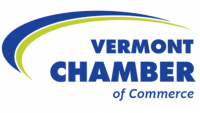Senate Poised for Debate on Sweeping Education Finance Overhaul
Following last year’s 14%average property tax increase, Vermont’s education finance and delivery system stands at a critical juncture. H.454 aims to overhaul nearly every aspect of K–12 funding and delivery—from recalibrating property tax credits to introducing equalization measures designed to narrow funding gaps between districts. Passed by the Senate Finance Committee (5-2-0) late Thursday, the education transformation bill now moves to the Senate floor. With a spirited debate and at least one amendment expected, policymakers must balance ambitious reforms against the need to contain costs.
Key Fiscal Provisions
- Property Tax Classifications: The House-passed version would have split Nonhomestead into four classes, raising the risk of disproportionate increases on commercial properties and adding administrative complexity. In its place, the Senate Finance Committee rolled back that expansion and instead directed the Department of Taxes to deliver, by December 15, 2025, a stakeholder-informed study on potential classification models—covering use-based definitions, mixed-use parcel treatment, data collection protocols, appeals processes, and compliance safeguards. The Vermont Chamber testified both in the House and the Senate, emphasizing that any reform to Vermont’s property tax system should prioritize simplicity, predictability, and fairness.
- Homestead Exemption: The Committee’s draft holds Homestead relief at $1.6 million below the current income-sensitivity model for FY25, targets low- and moderate-income homeowners through a tiered cap on the exempted house site value, and phases out benefits above $100,000 of household income. Future review by the Tax Department may spur further adjustments.
- Supplemental Spending & Equalization: Supplemental district spending remains capped at 10% of base funding. The Committee retained the House’s “lowest-rich-district” equalization approach for now, with plans to revisit averaging methodologies on the floor. Any excess revenue will flow into the School Construction Fund, helping to address long-term capital needs.
Looking Ahead
As discussions continue, the Vermont Chamber will remain engaged in the conversation, ensuring that potential business impacts are carefully balanced with the broader goals of funding a high-quality education system.
